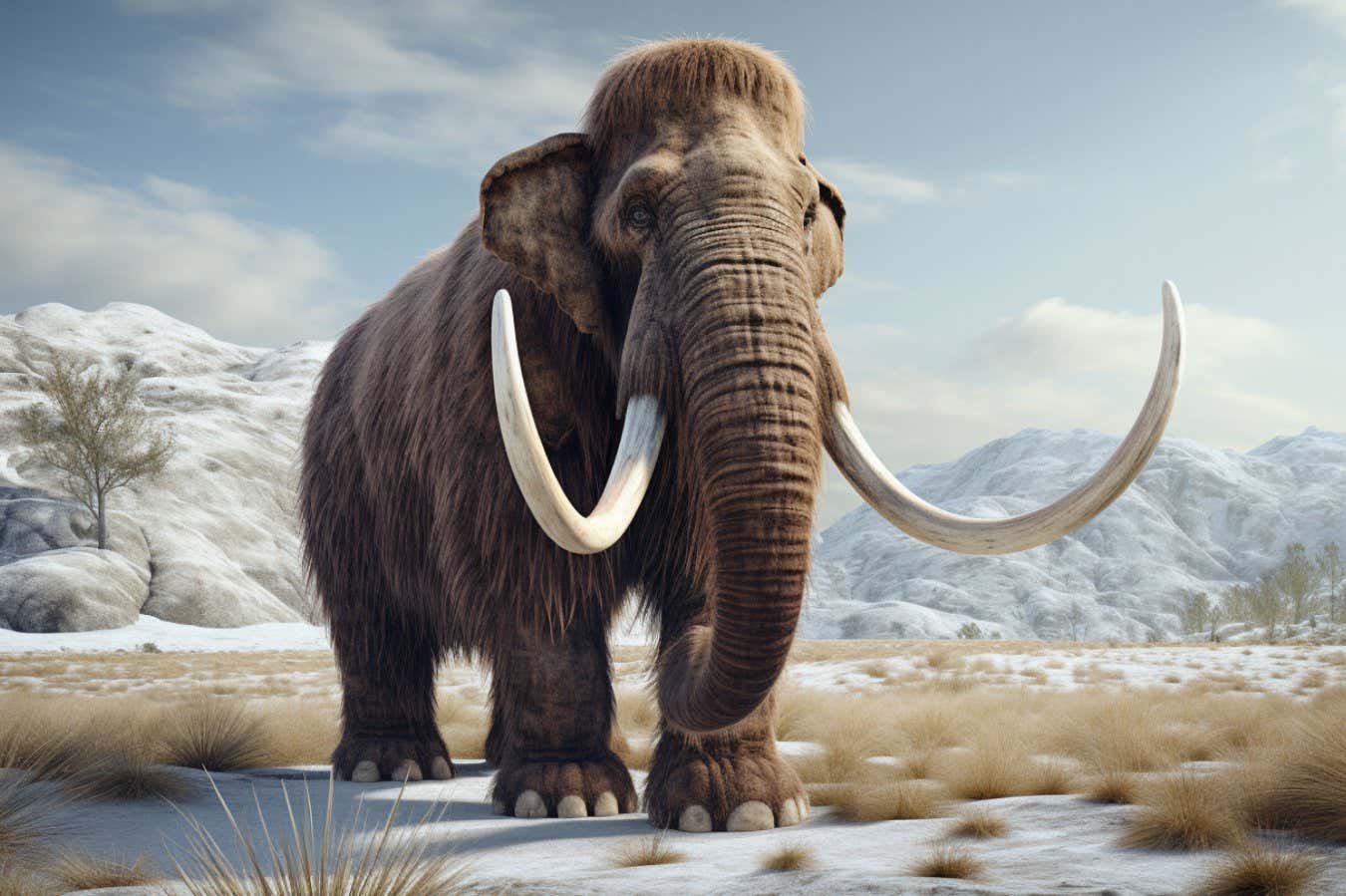A company called Colossal claims it has taken a “momentous step” towards bringing back the woolly mammoth. Here’s all you need to know about whether such a feat is possible
By Michael Le Page
6 March 2024
Unlike extinct woolly mammoths, most edited elephants with mammoth-like traits would have no tusks, to get around ivory poaching
QuangTrungArt/Shutterstock
A company set up to resurrect extinct animals says it has achieved a major breakthrough in its goal of bringing back the woolly mammoth. On 6 March, Colossal announced that its team had managed to turn normal elephant cells into stem cells, which could lead to a mammoth-like creature. “This is a momentous step,” its CEO, Ben Lamm, said in a press release. Here’s what you need to know.
Is it really possible to bring the woolly mammoth back from extinction?
No it isn’t and never will be. While the genomes of several frozen mammoths have been sequenced, these are riddled with gaps. However, it should be possible to edit the genomes of living elephants to make them mammoth-like. Colossal acknowledges on its website that what it plans to create will be “a cold-resistant elephant”, but says the animal will have “all the core biological traits of the Woolly Mammoth”.
Advertisement
Will these edited elephants look like mammoths?
According to Colossal, they will even sound like them, though how it knows what mammoths sounded like is unclear. When it comes to their appearance, there will be at least one major difference: the vast majority will have no tusks to avoid ivory poaching, says George Church, Colossal co-founder. Those with tusks could be kept only in places with heavy surveillance, he says.
Colossal also plans to make the mammoth-like elephants resistant to a highly fatal disease caused by elephant endotheliotropic herpesviruses.
